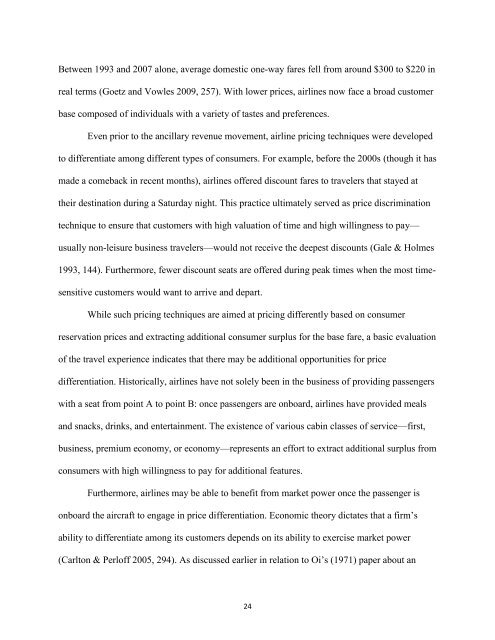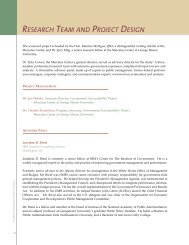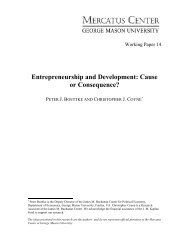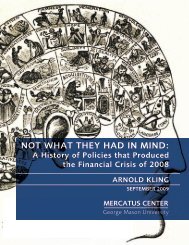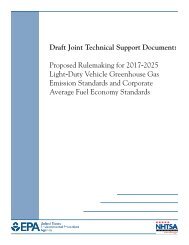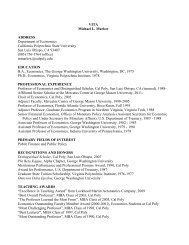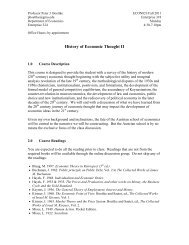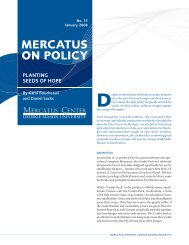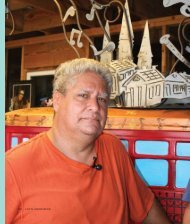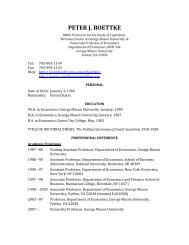A-La-Carte Pricing in the Airline Industry - Graduate Student ...
A-La-Carte Pricing in the Airline Industry - Graduate Student ...
A-La-Carte Pricing in the Airline Industry - Graduate Student ...
You also want an ePaper? Increase the reach of your titles
YUMPU automatically turns print PDFs into web optimized ePapers that Google loves.
Between 1993 and 2007 alone, average domestic one-way fares fell from around $300 to $220 <strong>in</strong>real terms (Goetz and Vowles 2009, 257). With lower prices, airl<strong>in</strong>es now face a broad customerbase composed of <strong>in</strong>dividuals with a variety of tastes and preferences.Even prior to <strong>the</strong> ancillary revenue movement, airl<strong>in</strong>e pric<strong>in</strong>g techniques were developedto differentiate among different types of consumers. For example, before <strong>the</strong> 2000s (though it hasmade a comeback <strong>in</strong> recent months), airl<strong>in</strong>es offered discount fares to travelers that stayed at<strong>the</strong>ir dest<strong>in</strong>ation dur<strong>in</strong>g a Saturday night. This practice ultimately served as price discrim<strong>in</strong>ationtechnique to ensure that customers with high valuation of time and high will<strong>in</strong>gness to pay—usually non-leisure bus<strong>in</strong>ess travelers—would not receive <strong>the</strong> deepest discounts (Gale & Holmes1993, 144). Fur<strong>the</strong>rmore, fewer discount seats are offered dur<strong>in</strong>g peak times when <strong>the</strong> most timesensitivecustomers would want to arrive and depart.While such pric<strong>in</strong>g techniques are aimed at pric<strong>in</strong>g differently based on consumerreservation prices and extract<strong>in</strong>g additional consumer surplus for <strong>the</strong> base fare, a basic evaluationof <strong>the</strong> travel experience <strong>in</strong>dicates that <strong>the</strong>re may be additional opportunities for pricedifferentiation. Historically, airl<strong>in</strong>es have not solely been <strong>in</strong> <strong>the</strong> bus<strong>in</strong>ess of provid<strong>in</strong>g passengerswith a seat from po<strong>in</strong>t A to po<strong>in</strong>t B: once passengers are onboard, airl<strong>in</strong>es have provided mealsand snacks, dr<strong>in</strong>ks, and enterta<strong>in</strong>ment. The existence of various cab<strong>in</strong> classes of service—first,bus<strong>in</strong>ess, premium economy, or economy—represents an effort to extract additional surplus fromconsumers with high will<strong>in</strong>gness to pay for additional features.Fur<strong>the</strong>rmore, airl<strong>in</strong>es may be able to benefit from market power once <strong>the</strong> passenger isonboard <strong>the</strong> aircraft to engage <strong>in</strong> price differentiation. Economic <strong>the</strong>ory dictates that a firm‘sability to differentiate among its customers depends on its ability to exercise market power(Carlton & Perloff 2005, 294). As discussed earlier <strong>in</strong> relation to Oi‘s (1971) paper about an24


